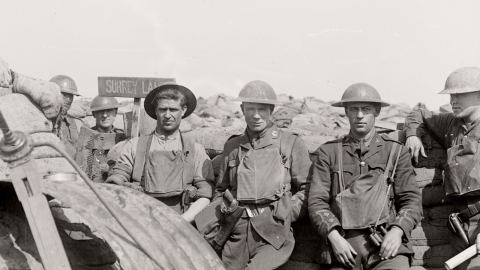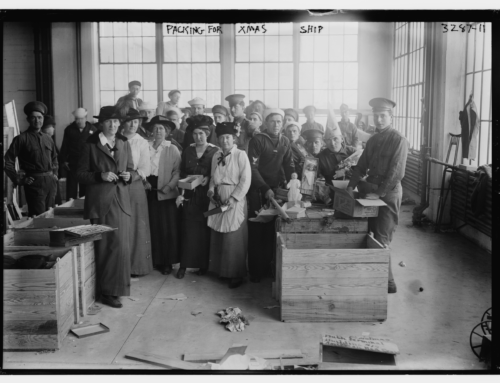Not just the Western Front: “Ring of Fire” rediscovers WWI’s global story
Published: 31 July 2025
By Tim Brinkhof
via the BIG THINK website

New Zealand officers in the trenches of the Messines Sector (Belgium) during World War I. (Credit: National Library NZ on the Commons / Wikimedia Commons)
“Now Europe is a ring of fire,” the Russian poet Zinaida Gippius wrote in 1914, not long after her country declared war on Austria-Hungary. Soon afterward, Germany, France, and Great Britain would enter the fight and begin mass-mobilizing troops. “I look at these lines, written by my hand, as if I was out of my mind. World War!”
 Today, the causes and consequences of the First World War can be as puzzling as when Gippius put those words to paper. Fortunately, a new book, Ring of Fire: A New Global History of the Outbreak of the First World War, aims to help a new generation of readers understand how this pivotal moment in modern history began.
Today, the causes and consequences of the First World War can be as puzzling as when Gippius put those words to paper. Fortunately, a new book, Ring of Fire: A New Global History of the Outbreak of the First World War, aims to help a new generation of readers understand how this pivotal moment in modern history began.
Written by historians Alexandra Churchill and Nicolai Eberholst, Ring of Fire distinguishes itself from previous works on the subject in significant ways. Whereas scholarship — including Barbara Tuchman’s 1963 Pulitzer Prize-winner The Guns of August — has often treated the war like a real-life Game of Thrones, Eberholst and Churchill largely operate outside the corridors of power. They instead chronicle the war from the perspective of the 99%: soldiers, students, and urban workers as opposed to emperors and generals.
Ring of Fire also stands apart in its geographic scope. Much of what has been written about the war focuses on Europe, especially the Western Front. Eberholst and Churchill instead pull their camera back to view the conflict on a global scale. From South America to West Africa, they examine how military and financial needs of the European powers changed the relationships between them and their colonies, inadvertently paving the way for post-war decolonization movements.
Though increasingly obscured as its distance from the present moment grows, the First World War is as deserving of our attention as ever. Not only because it planted the seeds for the militant nationalism of Germany, Italy, and Japan, thus cultivating the conditions for World War II, but also in how it shaped the world that emerged after.
Big Think: What about Zinaida Gippius’s words made you think, “This is going to be the title of our book”?
Eberholst: She was looking at the phrase “world war” and reflecting on what that means. It was no longer a localized conflict as many might have initially expected. She realized: This is the entire world at war, and the shift happened in a matter of days.
The dawning awareness of global catastrophe was often expressed through this very phrase: “a world at war.” It started appearing independently in writings from France, Belgium, Russia. People who had no connection to each other, yet were all reaching for the same words to describe what they were witnessing.
Big Think: You have described Ring of Fire as The Guns of August for a new generation. What about these books makes them appealing to different generations aside from their publication dates?
Churchill: The Guns of August isn’t a terrible book — far from it. Tuchman writes beautifully. It was groundbreaking when it was published, but 50 years later, as historians, we felt it was time to open the floor to more voices beyond just the politicians making decisions or the generals leading their armies.
We wanted to write a history from the bottom up, one that focused on ordinary men, women, and children. We’re not trying to make Tuchman’s work redundant. If you look at both books side by side, they provide opposite but complementary perspectives on the opening of the First World War.
→ Read the entire article on the BIG THINK website here:
External Web Site Notice: This page contains information directly presented from an external source. The terms and conditions of this page may not be the same as those of this website. Click here to read the full disclaimer notice for external web sites. Thank you.



